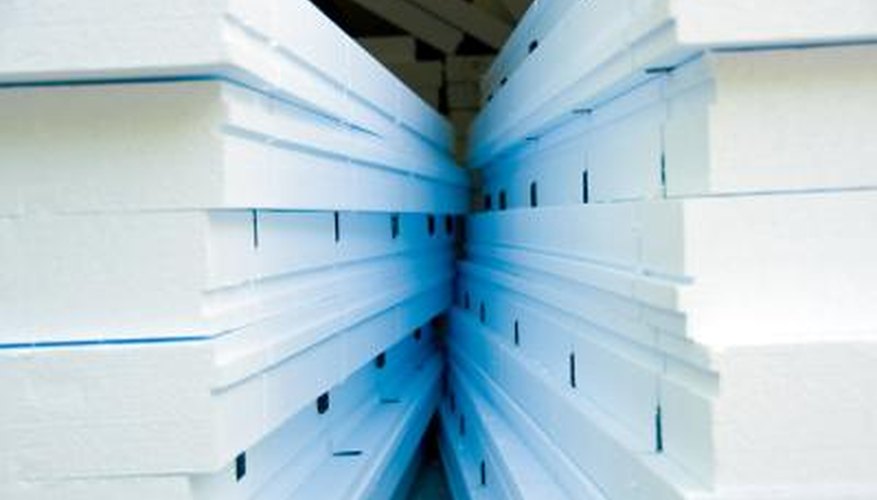Polyisocyanurate foam board is rigid foam used for insulation. Because of the board's excellent thermal properties, you can use thinner foam boards in place of thicker foam boards made of polystyrene and polyurethane. Polyisocyanurate is found with a range of R-values from 5.6 to 8 per inch of thickness. This R-value range, or measure of thermal resistance, is quite high. Bending polyisocyanurate foam is necessary when insulating pipes and other curved areas. Once it is bent and installed, the foam board reduces heat conduction and adds structural support.
Measure and mark with a tape measure and pencil where the bend occurs on the foam board. Mark the start and end of the bend area, as the foam will curl around the object. Add vertical marks every few inches from the start to end of the bend. The more marks within the bend area the easier it is to bend the polyisocyanurate board.
- Polyisocyanurate foam board is rigid foam used for insulation.
- The more marks within the bend area the easier it is to bend the polyisocyanurate board.
Place your straight edge along the bend line. Score the outer layer of the foam board with a utility knife. Only cut the very top layer of the foam board; do not cut all the way through. Practice this a few times on a spare piece of board until you are confident with your scoring abilities. Score all of the marked, vertical bend lines.
- Place your straight edge along the bend line.
Wrap the scored polyisocyanurate board around the object being insulated. Gently press on the bend area to allow the board to bend. Use duct tape to secure the foam board in place temporarily.
Install metal bands or large hose clamps around the foam board if it is encircling a pipe or other round object. Insulation tape will secure polyisocyanurate bent boards that do not completely encircle the object. This secures the foam board in place permanently.
Tape the edges of any area that cracked when bending. Caulk over the entire taped area to ensure a complete seal.
